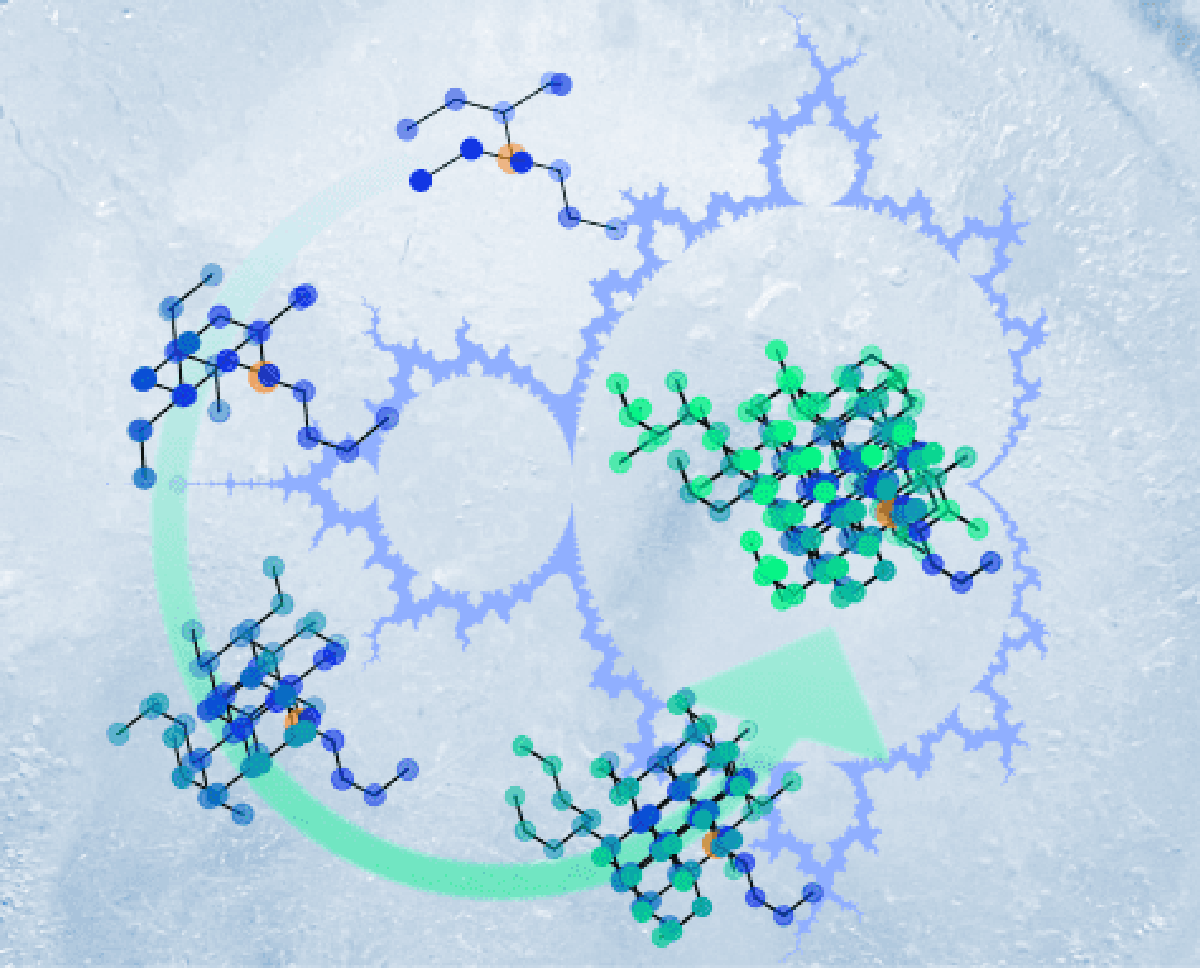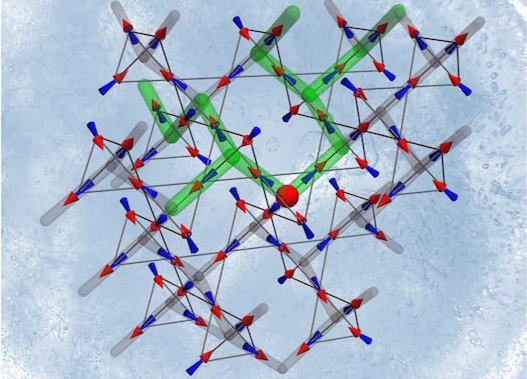
A new type of fractal has appeared unexpectedly in a class of magnets known as spin ices. The new fractals, which were observed in clean three-dimensional crystals of dysprosium titanate (Dy2Ti2O7), appear to come from excitations of magnetic monopoles in the material, and could have applications in magnetocalorics, spintronics, information storage and quantum computing.
Fractals are ubiquitous in nature and exist at many scales, from the macro to the nano. Everyday examples include snowflakes, networks of blood vessels, mountain landscapes and coastlines. To qualify as a fractal, an object must have a hierarchical geometric structure with a basic pattern that repeats at ever-decreasing sizes, branching off into narrower patterns that are smaller versions of the main one.
Entirely new type of fractal
A team at the University of Cambridge, the Max Planck Institute for the Physics of Complex Systems in Dresden, the University of Tennessee in the US and the Universidad Nacional de La Plata in Argentina has now discovered an entirely new type of fractal in clean three-dimensional spin ices. The name “spin ices” comes from the fact that in these materials, the disorder of magnetic moments (or spins) at low temperatures is exactly the same as the proton disorder in water ice. Structurally speaking, spin ices contain rare-earth ion moments that occupy the corners of a tetrahedral pattern, and local constraints mean that these moments obey the “ice rules”: two them point into the tetrahedron and two point out of it.
At temperatures just above zero kelvin, the crystal spins form a magnetic fluid. Small amounts of thermal energy then cause the ice rules to break at a small number of sites, and the north and south poles making up the flipped spins separate from each other. At this point, they behave as if they were independent magnetic monopoles.
Living in a fractal world
“We realized that the monopoles must be living in a fractal world,” explains team member Claudio Castelnovo from the University of Cambridge, “and not moving freely in three dimensions as had always been assumed.” To be more precise, he adds, the configurations of the spins created a dynamic network that branched as a fractal, and the monopoles moved along it (see figure).

To explain this behaviour, the researchers referred to a mathematical model that describes how monopoles hop thanks to quantum tunnelling of the magnetic spins. They found that there are two very different timescales on which a monopole can do this. “Which timescales a specific spin tunnelling event happens on depends on the configuration of the neighbouring spins,” says study lead author Jonathan Nilsson Hallén. “It became clear that the longer of the two different tunnelling timescales is much larger than the shorter one. Monopole hops happening on the longer timescales can therefore be ignored.”
Clusters form fractals
When the researchers accounted for this and calculated the typical number of remaining hops available for a monopole, they found that the system sits near a critical point at which the average number of moves available to a monopole at each site is the one that generates fractal clusters. In their simulations, they mapped out the sites each monopole can reach and showed that these clusters do indeed form the fractals they predicted.
Studying monopoles in spin ices this way could be important for a host of applications, Hallén says. “Spin ices are one of the most accessible instances of topological magnets and magnetic monopoles in spin ices are one of the best understood examples of fractionalized excitations,” he tells Physics World. “Topological materials remain to date one of the most intensely researched areas of condensed matter physics, and there is hope that the exciting phenomena that these materials display will prove useful for applications such as magnetocalorics, spintronics, information storage and quantum computing.”

Magnetic monopoles appear in artificial spin ice
Hallén notes that evidence of unusual dynamical behaviour in spin ices has been accumulating for more than two decades. Given this mounting body of evidence, he suggests that the length of time it took to discover dynamical fractals in spin ice clearly demonstrates that we are far from understanding the behaviour of fractionalized charges, like magnetic monopoles, at the same level that we understand conventional charges such as electrons in a metal. “The capacity of spin ices to exhibit such striking phenomena makes us hopeful of further surprising discoveries in the cooperative dynamics of even simple topological many-body systems,” he says.
The researchers are now investigating how the other properties of spin ices may be affected by the dynamical fractals. “In particular, we hope to work with experimental groups to find further evidence of this behaviour,” Hallén says. “We are also actively searching for other systems in which similar dynamical constraints may appear, and we plan to more broadly investigate the range of effects they may give rise to.”
They detail their present work in Science.



